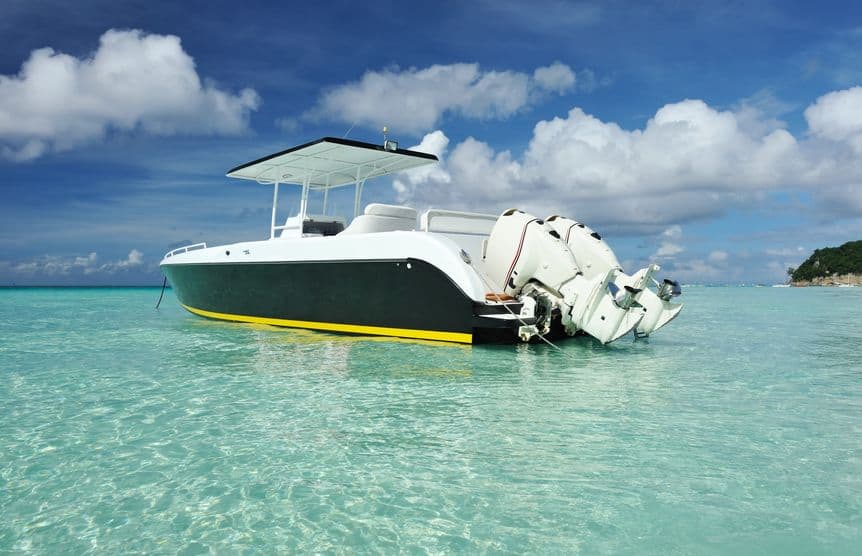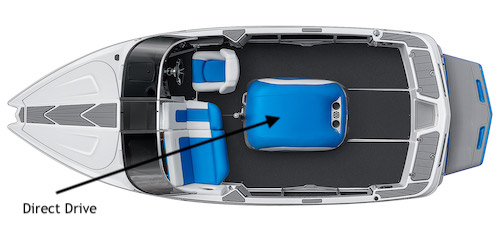

While RPMs at a cruising speed tend to be higher with an outboard engine, they still beat sterndrives in fuel efficiency - one of the pros of outboards on bowriders. If gallons per hour are important to you, consider a modern four-stroke outboard, as they are often the most fuel efficient. Those hundreds of pounds you save in weight with an outboard translate to savings when it comes to fuel efficiency. However, it is important to consider what type of water you’ll cruise, as more weight gives you a much sturdier ride as you cut through waves. Usually, when it comes to performance and overall handling, lighter is better. The difference in weight varies depending on the specific model of each, but an outboard is frequently hundreds of pounds lighter. Both sterndrives and outboards will come with a choice of horsepower, but there are other important aspects to consider.įor example, if we’re comparing a 200-horsepower sterndrive to a 200-horsepower outboard - both have the same horsepower, but one weighs significantly more than the other. Outboards weren’t always able to compete in the performance category, but the amount of horsepower you can pack into them today is a game changer. sterndrives, you want to consider the power-to-weight ratio.

When it comes to the performance of outboards vs. We’ve gathered information regarding several of the key factors to consider when you’re deciding on outboard vs. There are several factors to comparing these two types of engines, and both engines come with their list of pros and cons. The two most popular engines for bowriders are sterndrive and outboard engines. If you’re interested in purchasing a recreational boat, you’re probably considering a bowrider. The drive unit is tucked beneath the swim deck. In sterndrive engines, the motor is in the back of the boat under the transom. Sterndrive engines, also known as inboard/outboards (I/O), are a combination of inboard and outboard engines, as their name suggests. While outboard engines are usually less powerful than inboards, you can match the power by having a few outboards on your boat. These engines are also known for their steering ease. This engine location is visible and accessible, so it can be tilted out of the water, making maintenance a breeze. The position of the V-Drive naturally causes a more significant wake and is perfect for other watersports.Īs their name suggests, outboard engines are attached high on the transom, outside of the boat. D-Drive’s location in the center of the boat results in a much smaller wake, making it ideal for ski boats. Often the choice of D-Drive versus V-Drive comes down to the use of the boat. V-Drive engines maintain the same location for both the prop and rudder, but the engine itself is under the transom seating. D-Drives go in the center of the boat, with the prop and rudder beneath the hull. There are two types of inboard engines, D-Drive and V-Drive. Inboard engines are under the deck and out of sight. The main difference between the three is the location of the engine. While outboard engines outperform sterndrive engines in some areas and vice versa, the decision ultimately comes down to your specific boating wants and needs.īefore we get into the specifics of each factor, it’s important to be familiar with the three types of boat engines - inboard, outboard and sterndrive, also known as inboard/outboard.

What is the reason behind this industry shift to outboards? How do you know if an outboard engine is right for you? What features do you need to consider as you shop for your bowrider? We’ve compiled a list of some of the critical factors to consider - performance, fuel efficiency, space, aesthetics, tilt, cost, maintenance, winterization and noise level. (SSI), the US Boat industry has sold more and more outboard-powered boats over the past few years - up from 127,981 in 2012 to 165,435 in 2016. In the past, sterndrives have always been the preference for bowriders, but as time has gone on brand new boats are coming with outboard power, even when it comes to some high-performance boats. If you’re in the market for a bowrider boat, chances are you’ve noticed more and more are available with outboard engines in place of sterndrive engines.


 0 kommentar(er)
0 kommentar(er)
